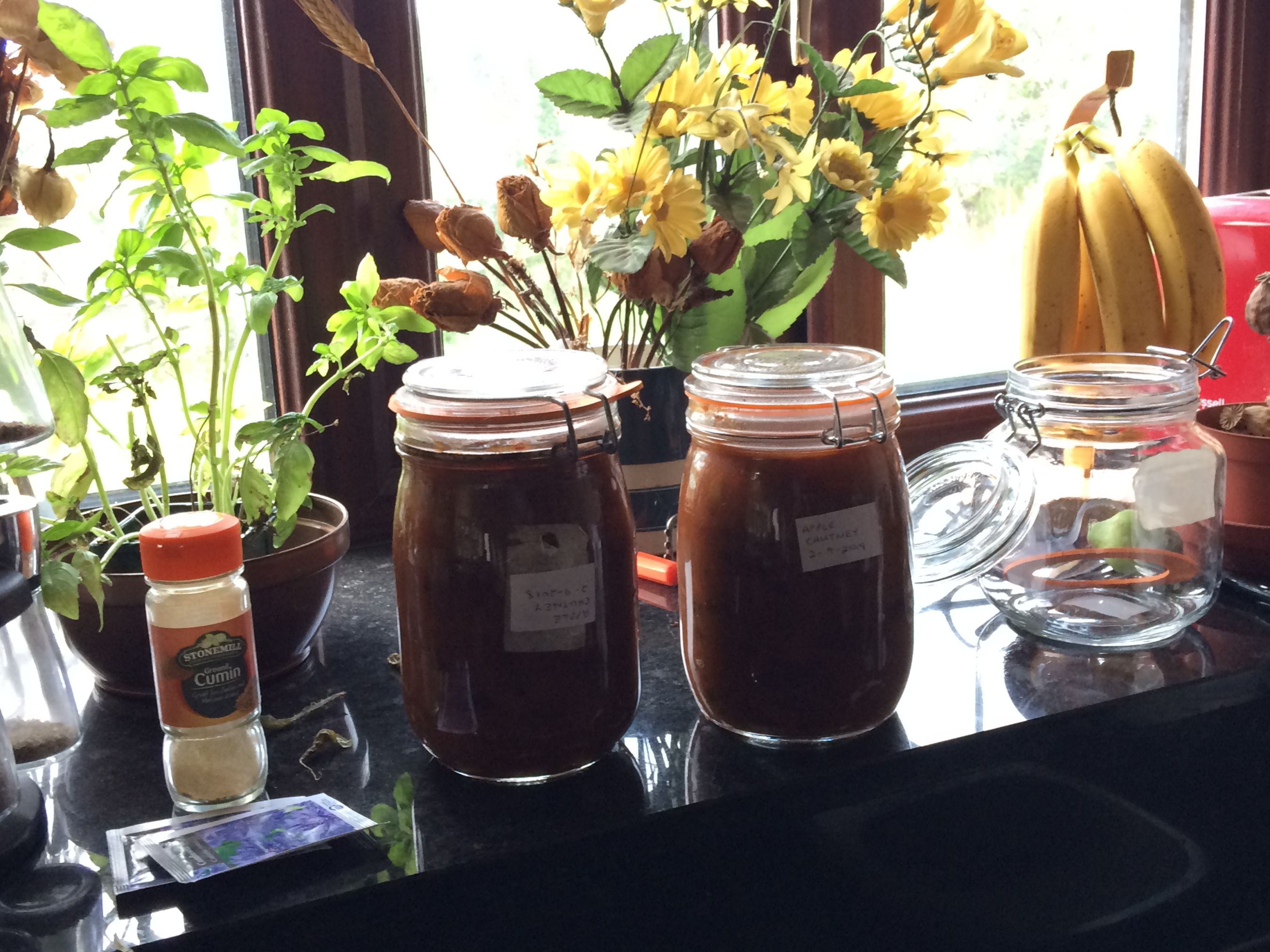The kitchen at The Sticks has been busy processing its first batch of windfall apples this season. OK, so we didn't make jam, a proposed staple for our new post Brexit export economy, but our first preserve of the season has hit the jars. Apple chutney. What could be more British?
If we thought living off beans, to keep up with the cropping, was becoming tedious the volume of apples and pears is truely alarming.
There is no way we can eat them all fresh - so finding ways to store and preserve them is our current challenge. The tomatoes, aubergines and pepers are still ripening at a nice steady rate, and for now we can incorporate the daily harvest into our menu, so no rush yet to convert the remaining green fruit into pickles. But the apples and pears are an althogether different matter.
As Brexit approaches and the government has issued its technical notes for preparation in event of a 'no deal' we here, rooted to our spot at the Sticks, have been learning from our first serious season as vegetable gardeners and planning for next year with the intention of producing all year round crops. It's all well and good having more than we need in the late Summer and early Autumn, but even in these mad Brexit times when rational thought is rationed and advance planning is out of fashion, we realise we need to eat all year round.
The Webmaster boasts of his chutney making skills and he has certainly produced some fine stuff in the past, but he doesn't always get it right and the production of this first batch of apple chutney didn't go quite according to plan and ended up taking twice as long as expected.
Despite his previous chutney making successes, the Webmaster, like the Brexiters, tends to make it up as he's going along: a quick change here, a duck and dive there, keep the goal posts flexible, while I, the boring Remainer, prefer to research the facts and consults the experts. I asked the Webmaster to wait while I acquired some expert advice. He didn't. He ploughed on with his Brexit attitude: "Experts! What do they know? My tomato chutney was great and I made that up as I went along. Apple must be the same."
The experts said add the vinegar first and then add water to thin the consistency if it is too thick. The Webmaster did the opposite and added far too much water. A recoverable error but he had to simmer it for hours to reduce it down to convert it from watery soup into the chutney consistency. The flavour is good but it has almost certainly lost some texture. Let's hope he learns for next time.
In event you are reckless enough to try it, here is the Webmaster's recipe for Apple Chutney
Ingredients
2.4kg windfall apples, washed,cored but not peeled and cut into 3-4cm chunks
2-3 windfall pears, peeled, cored and cut into 3-4cm chunks
4 small to medium onions roughly chopped (approx 450g)
2 small to medium beetroots, washed and chopped into 2cm cubes (Ours were fresh from the garden with almost no skin, but if necessary peel)
100g root ginger chopped into 0.5 to 1cm cubes
4-5 cloves of garlic (depending on size), chopped
200g raisins
Tbl spoon paprika
Tbl spoon ground cumin
generous slurp of olive oil
750 ml distilled white vinegar (we need gluten free, but malt vinegar is probably just as good if you don't)
water to adjust consistency (the Webmaster added about 700ml water before the vinegar but then spent two hours reducing it down)
Method
Heat the olive oil in large pan (big enough to hold all the ingredients)
When oil is hot add the onions, garlic, ginger, beetroot stir fry until onions are soft and beginning to brown
Add the cumin and paprika, stir in and fry for further minute
Stir in the raisins, apples and pears. Mix thoroughly.
Add the vinegar, heat up to simmer, stirring occasionally as the apples and pears soften
Continue to simmer for a further hour or until mixture is the desired consistency (if necessary stir in water to thin)
Sterilise storage jars.
When ready ladle mixture into the storage jars and seal.
Mixture should make generous 2 litres.
We don't add sugar to our recipes. The sweetness from the fruit and the beetroots is sufficient to provide a tangy sweet and sour result.
